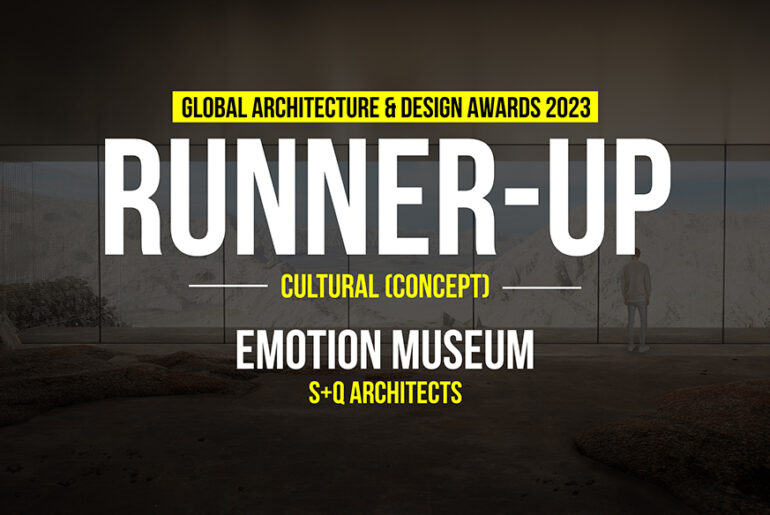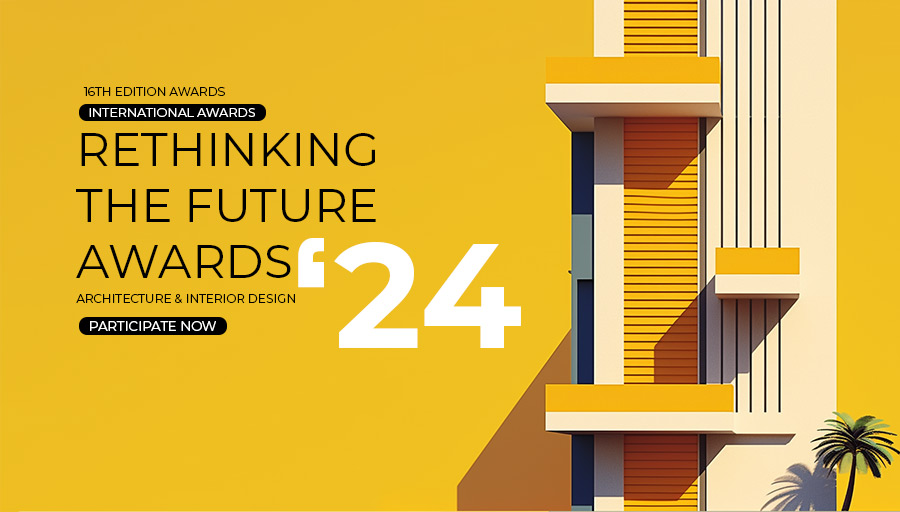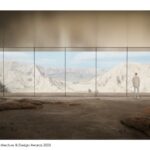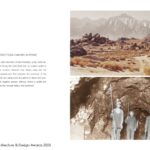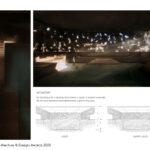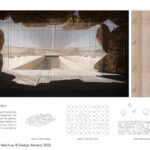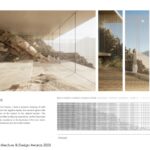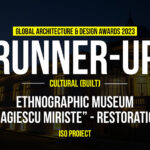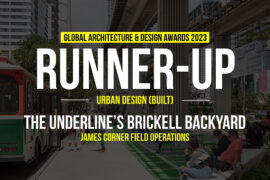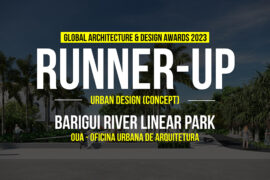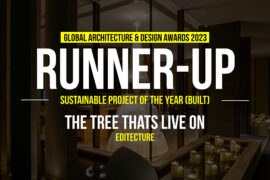A city named as Cerro Gordo Mines historically pivotal during the Gold Rush era. During that time, people were filled with hopes of getting rich as they explored their future in the dark and deep mines, and the small town in Cerro Gordo Mines became their temporary residence. Early gold mining activities were exceptionally arduous, as the workers’ kerosene lamps above their heads were prone to inadvertently igniting the dust in the air, causing explosions.
Global Design & Architecture Design Awards 2023
Second Award | Cultural (Concept)
Project Name: Emotion Museum
Category: Cultural (Concept)
Studio Name: Mao&Lu Architects
Design Team: Siyu Mao, Qiuying Lu
Area:1000 square meters
Year:2023
Location: California
Consultants: N/A
Photography Credits: Siyu Mao
Render Credits: Qiuying Lu
Other Credits: N/A
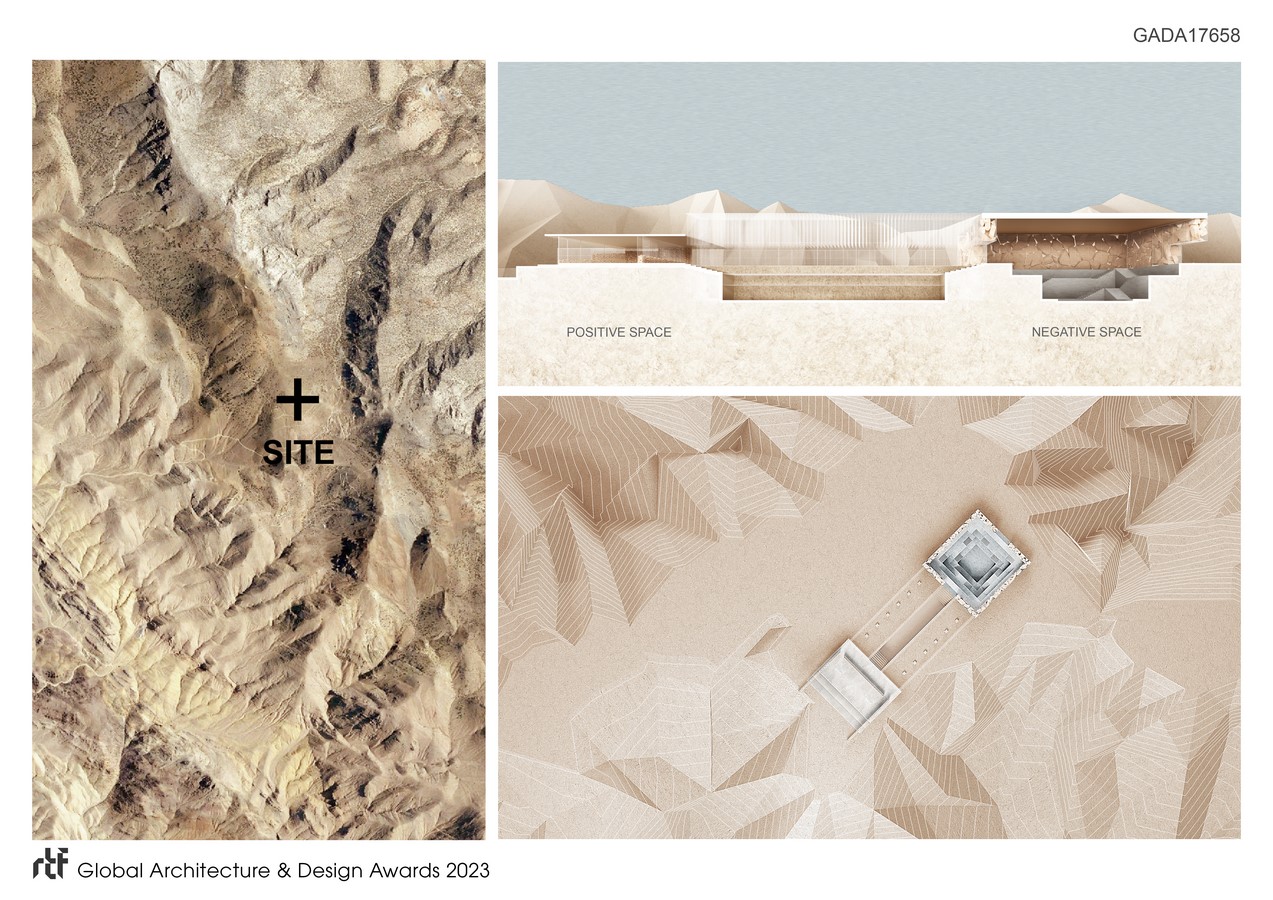
The narrow and winding nature of the caves further intensified the miners’ inner fears. However, the unknown fears also led people to discover a gleaming hope in the darkness. When miners unearthed precious metals, wealth shone like a beacon, guiding them towards the life they had hoped for. And when they emerged from the mines with their valuable metals, what met their eyes was the golden mountain ranges of California and the revelry in the town, night after night.
This project aims to depict the psychological shift experienced by miners during the Gold Rush era through the presentation of two contrasting spaces – the negative space and the positive space.
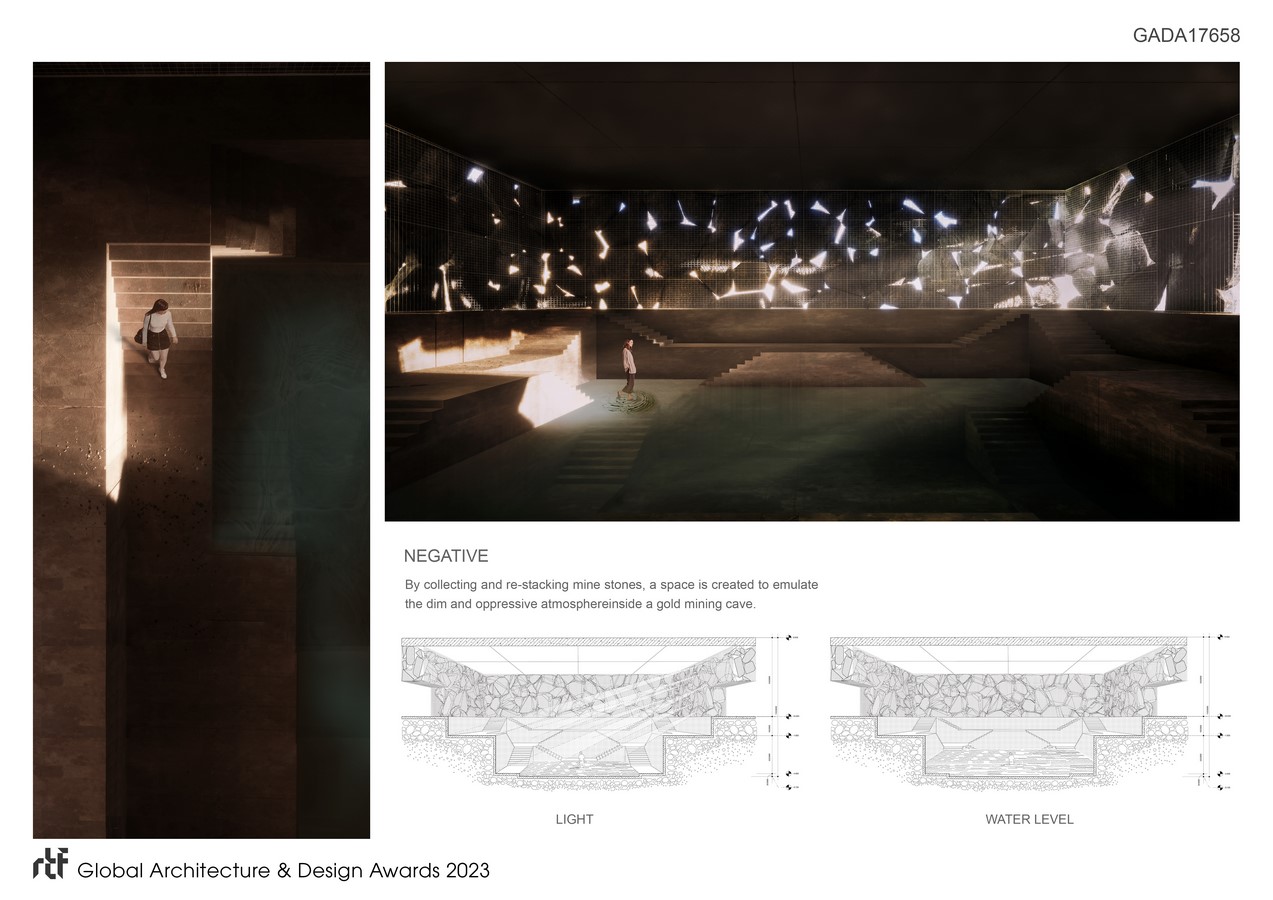
We collected the scattered stones inside the mine, and through the numbering, cutting, and reassembly of these stones, we created a narrative space that encapsulates the memories of an era. The enormous stones symbolize the primordial nature, and visitors, like miners, enter an untouched original space—a negative space—unearthing the daily excavation work of miners. We anchored these massive stones into walls made of wire mesh, allowing light to penetrate from the outside like scattered stars. Over time, the light transitions from brilliance to dimness, and the interior becomes increasingly shadowy. Irregularly, water seeps from the bottom of the negative space, and the fluctuating water levels, combined with the dim light, create a visually unsettling effect where the depth remains unseen, instilling an unknown fear in the visitors.
As the spatial route continues, visitors pass through an elongated corridor made of wire mesh into the positive space, symbolizing the long daily toil of the miners. Upon entering the positive space, small stones become the primary elements, representing the crushed rocks processed through human activity and excavation—essentially, the daily work of the miners in search of precious metals. Precious metals require strenuous human labor to be unearthed, and once discovered, they signify immense wealth beckoning to the miners. Therefore, inside the positive space, massive horizontal transparent glass walls come into view. The expansive California mountains and the remnants of the gold rush town symbolize the miners’ ecstatic emotions upon finding precious metals and their hopeful visions of a brighter future.”
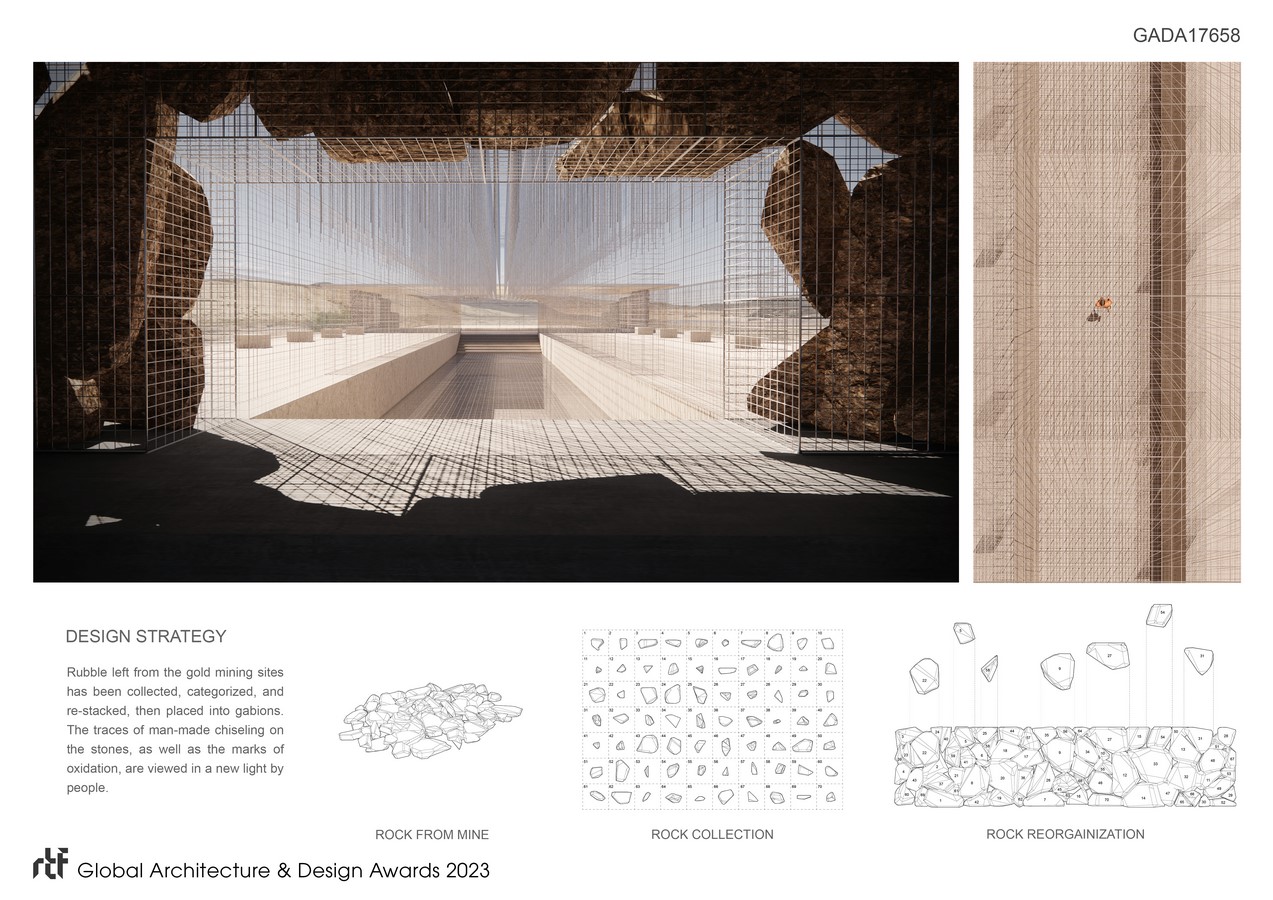
Through this lens, we sculpt an educational space that draws a parallel between the tools and testimonies of the Gold Rush and the contemporary visitor’s emotional journey, fostering a profound connection between history, emotion, and collective memory.

